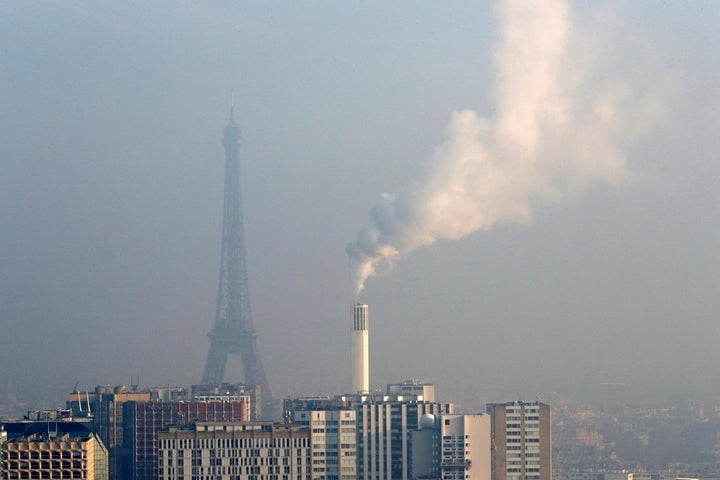
Air pollution — particulates tossed into the air from car exhaust, factory fumes, and power plants — is nasty stuff. Breathing it in causes damage to your lung tissue. It can trigger asthma attacks. It increases the risk of heart attacks, strokes, and lung cancer. And now, researchers writing in Environmental Microbiology have found that in addition to these unpleasant effects, the common pollutant black carbon seems to do something even more insidious: It alters the behavior of pathogenic bacteria.
The idea for the study came from a casual conversation with an atmospheric chemist, says Julie Morrissey, a University of Leicester biologist who studies the effect of stress on bacteria. The two scientists had dropped their respective children off at school and were walking back to the university, talking, when they realized no one had actually studied how bacteria respond to pollution.
“They’d looked at the effect [of air pollution] on the immune system, like human cells, but never on the actual bacteria themselves,” Morrissey says.
“We thought, well, this is really relevant.”
Respiratory-disease rates are known to climb with air pollution. To what extent that’s a result of tissue damage from the particulates, alterations in the immune system, or some other factor — like a shift in bacterial behavior—is not yet clear. Bacteria that form communities in the lungs and skin are exposed to pollution, too.
To investigate what happens in these situations, Morrissey’s graduate student Shane Hussey applied black carbon, a major component of air pollution, to colonies of Streptococcus pneumoniae and Staphylococcus aureus. These microbes often live quite peacefully in and on humans, but can also go rogue: They are known for their roles in bacterial pneumonia and dangerous skin infections, respectively.
RELATED: Trees Have Their Own Songs
Hussey added the carbon while the bacteria were in the process of assembling into fortress-like slabs called biofilms. He soon observed that the biofilms made under the influence of carbon looked quite different from biofilms that had no treatment or simply had harmless quartz crystals added: They were significantly thicker, and S. pneumoniae showed large channels or holes, while S. aureus had numerous lumps or protrusions. Because biofilms are known to help bacteria avoid antibiotics, changes in their structure can have an effect on the bacterium’s ability to cause disease.
When the team added antibiotics to the equation, they found that with black carbon, S. pneumoniae had increased resistance to penicillin, which is used to treat pneumonia. Some S. aureus strains also showed slightly decreased sensitivity to antibiotics. “We think it makes them more protected,” Morrissey says of the alterations to the biofilm structure. And when the team mixed black carbon and S. pneumoniae and placed them in the noses of mice, they saw that over the course of the study the bacteria spread down to the lungs, often a harbinger of serious infection. In control mice, without the black carbon, this did not happened.
The nature of these experiments — in dishes and mice, not in people or models of human infection — means that that their true significance has not really been established, Morrissey warns. Some of the data indicate that black carbon could be damaging to at least some strains of S. aureus, rather than provoking them to greater feats of self-protection. Some strains became more sensitive to antibiotics.
RELATED: The Patriarchy Hates the Moon
Still, at least in the snapshots this work provides, “we think what’s happening is we’re increasing their ability to colonize ... and making them able to protect themselves better,” Morrissey says. That’s troubling, and bears further investigation. More than 90 percent of the world’s population lives in regions where air-pollution levels, calculated in part from the concentration of black carbon and similar particulates, are over the WHO’s recommendations for health.
And a larger question looms: Could it be that air pollution disrupts people’s existing microbiomes in the nose and other tissues? Could this make them more vulnerable to infection? “Where this is really important is the microbiota,” says Morrissey, who is planning studies on the subject. If the native bacteria’s numbers or biology are altered by pollution, they could make space for newcomers with more malevolent tendencies — or even, in the end, turn against us themselves.
This story originally appeared on TheAtlantic.com.
More from The Atlantic: The Life-Changing Magic of Mushrooms, The Different Stakes of Male and Female Birth Control
